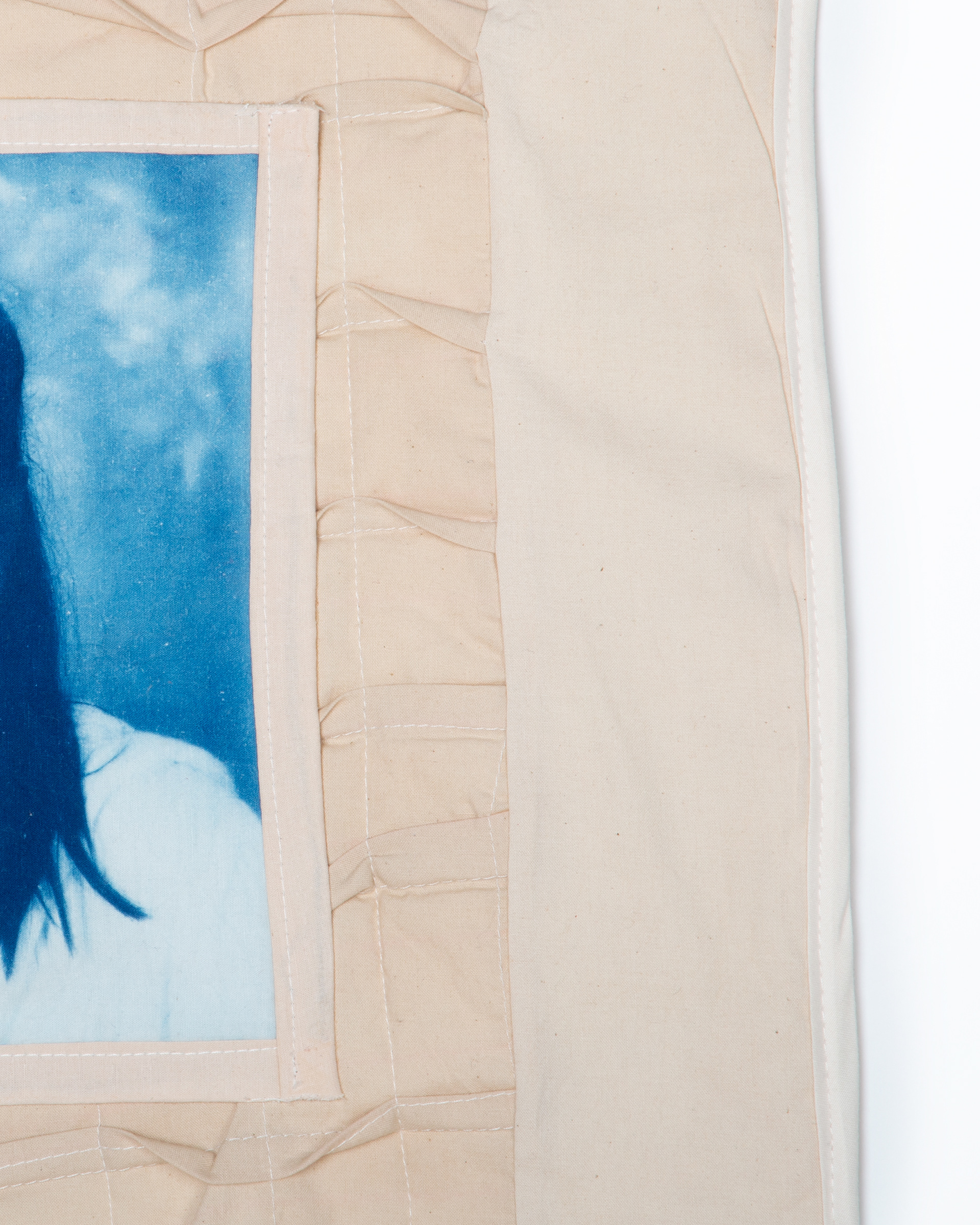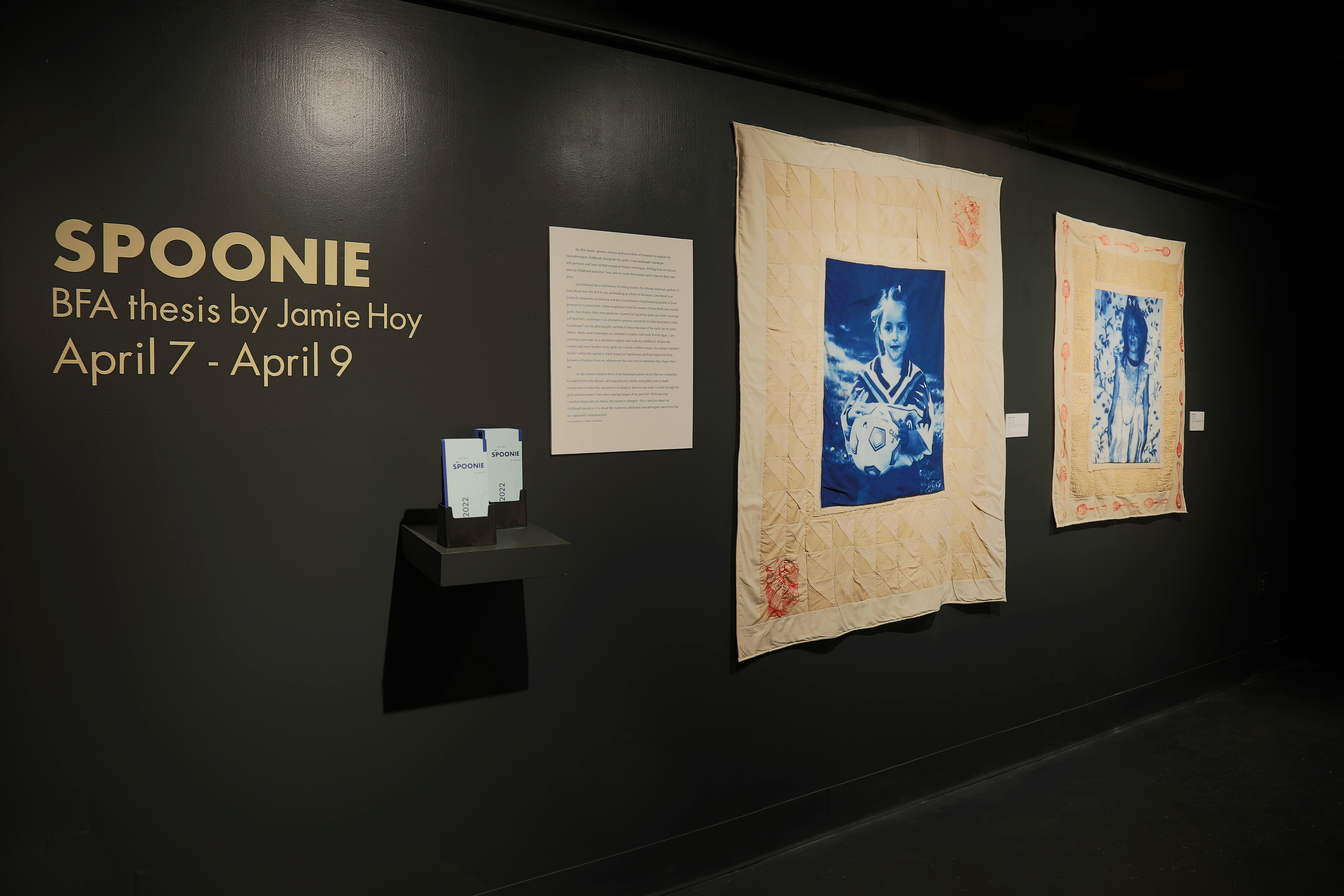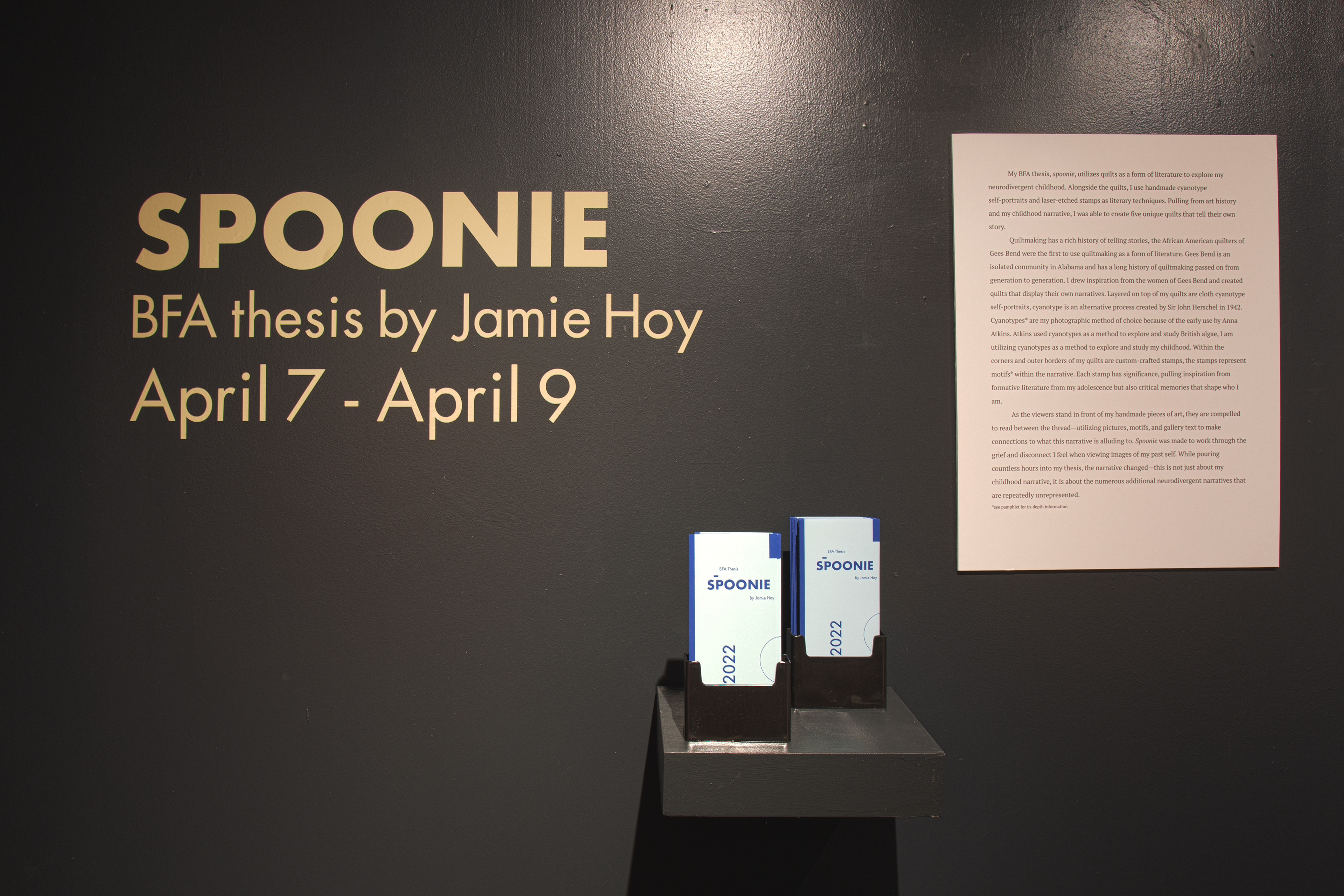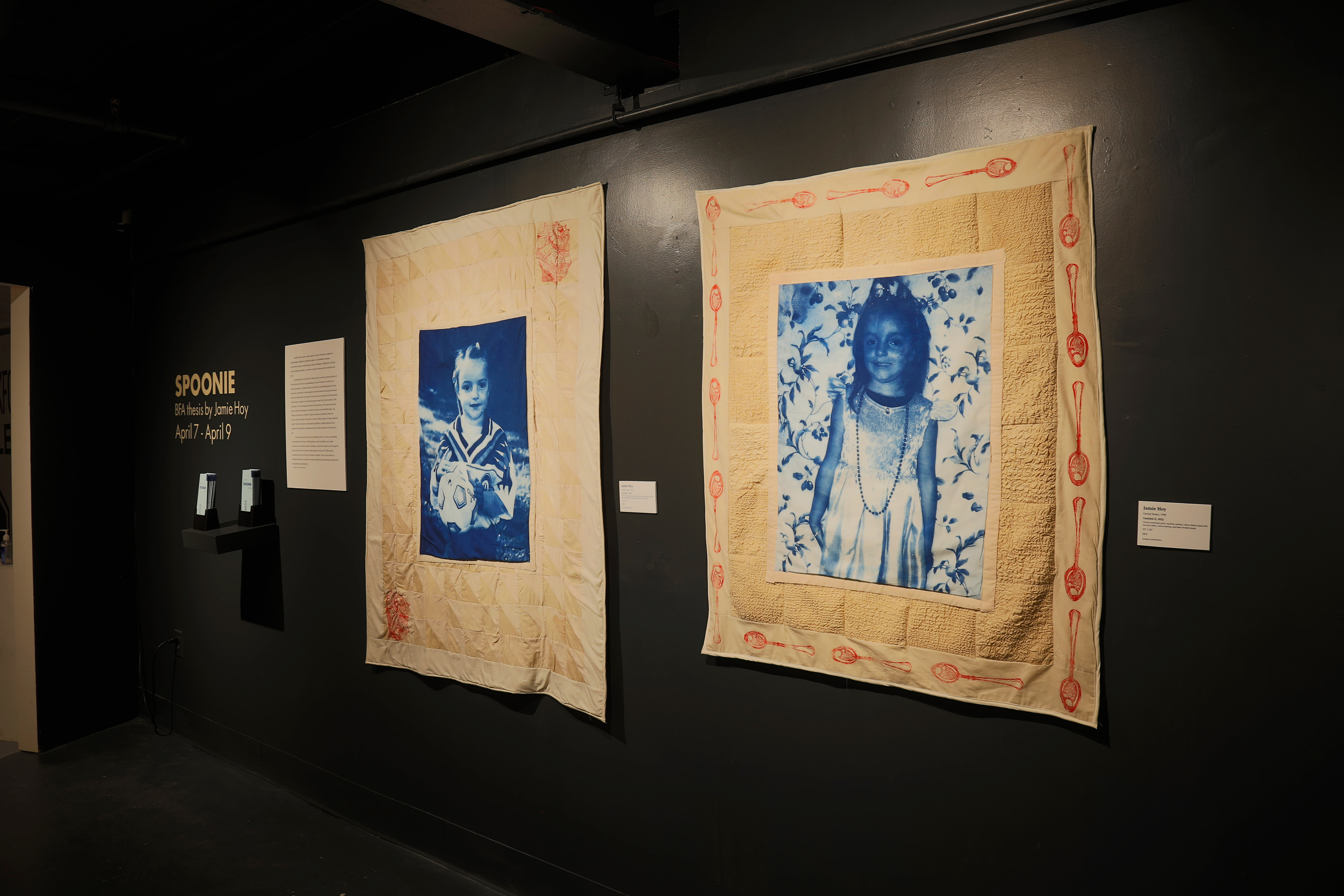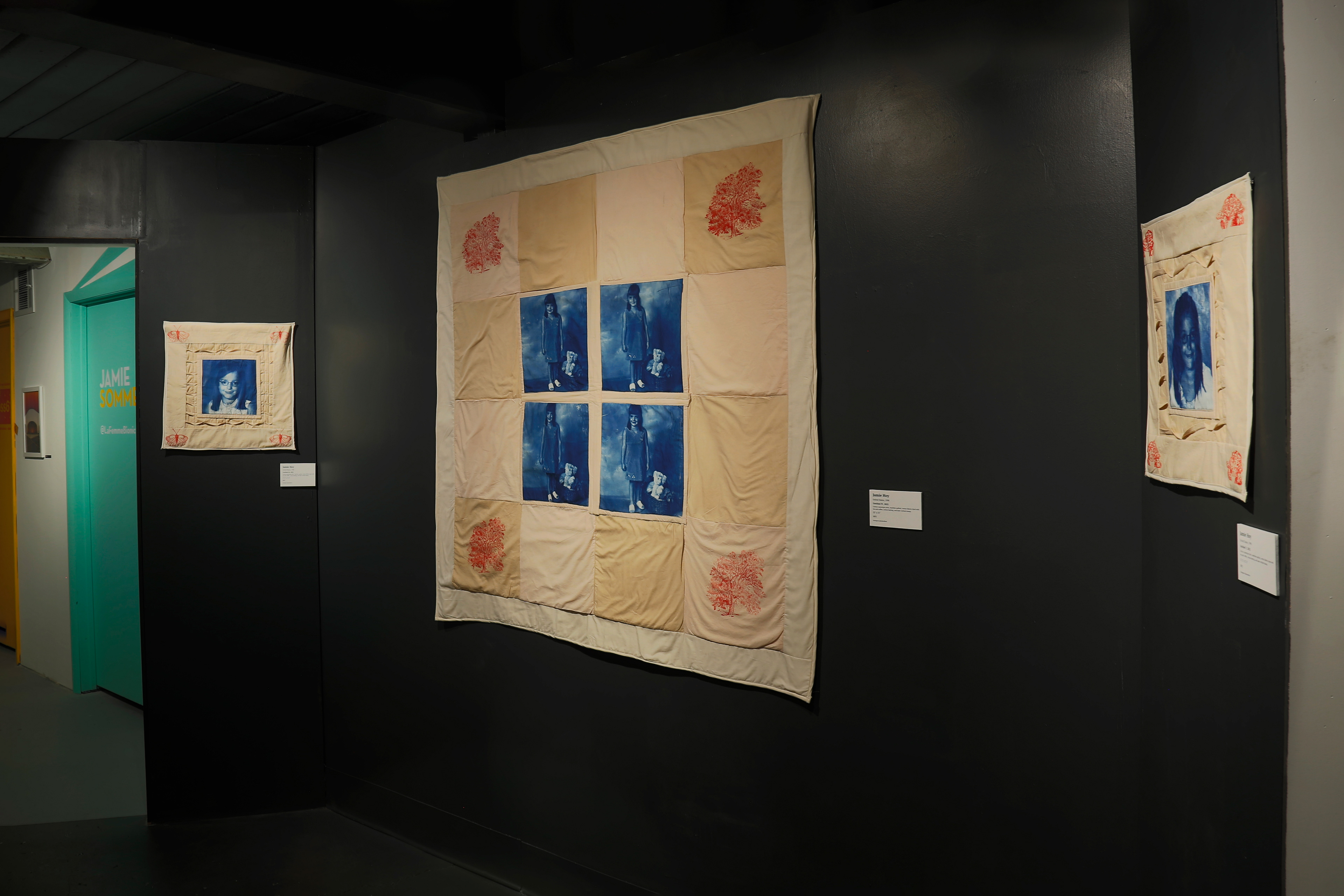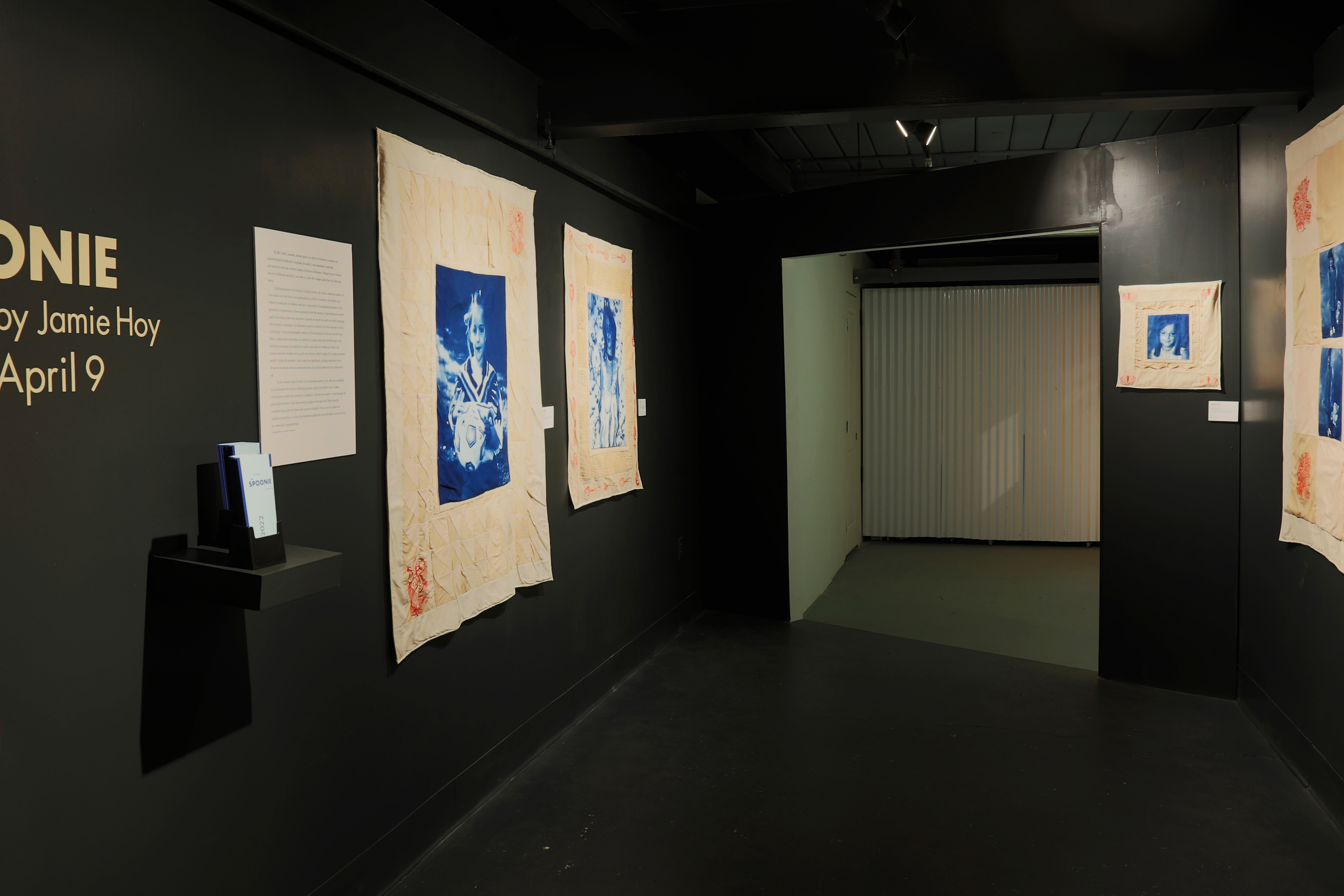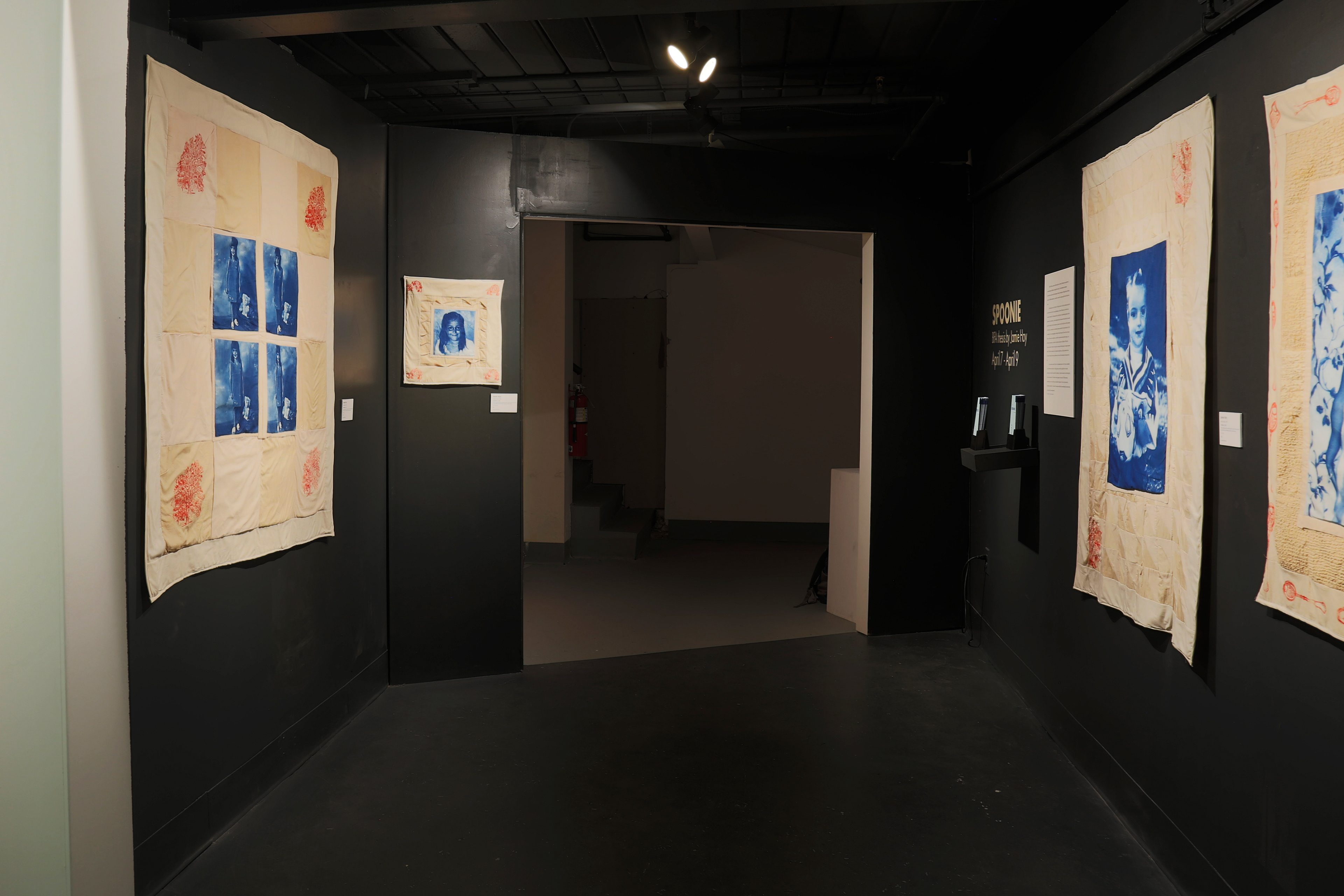My BFA thesis, spoonie, utilizes quilts as a form of literature to explore my neurodivergent childhood. Alongside the quilts, I use handmade cyanotype self-portraits and laser-etched stamps as literary techniques. Pulling from art history and my childhood narrative, I was able to create five unique quilts that tell their own story.
Quiltmaking has a rich history of telling stories, the African American quilters of Gees Bend were the first to use quiltmaking as a form of literature. Gees Bend is an isolated community in Alabama and has a long history of quiltmaking passed on from generation to generation. I drew inspiration from the women of Gees Bend and created quilts that display their own narratives. Layered on top of my quilts are cloth cyanotype self-portraits, cyanotype is an alternative process created by Sir John Herschel in 1942. Cyanotypes are my photographic method of choice because of the early use by Anna Atkins. Atkins used cyanotypes as a method to explore and study British algae, I am utilizing cyanotypes as a method to explore and study my childhood. Within the corners and outer borders of my quilts are custom-crafted stamps, the stamps represent motifs within the narrative. Each stamp has significance, pulling inspiration from formative literature from my adolescence but also critical memories that shape who I am.
As the viewers stand in front of my handmade pieces of art, they are compelled to read between the thread—utilizing pictures, motifs, and gallery text to make connections to what this narrative is alluding to. Spoonie was made to work through the grief and disconnect I feel when viewing images of my past self. While pouring countless hours into my thesis, the narrative changed—this is not just about my childhood narrative, it is about the numerous additional neurodivergent narratives that are repeatedly unrepresented.
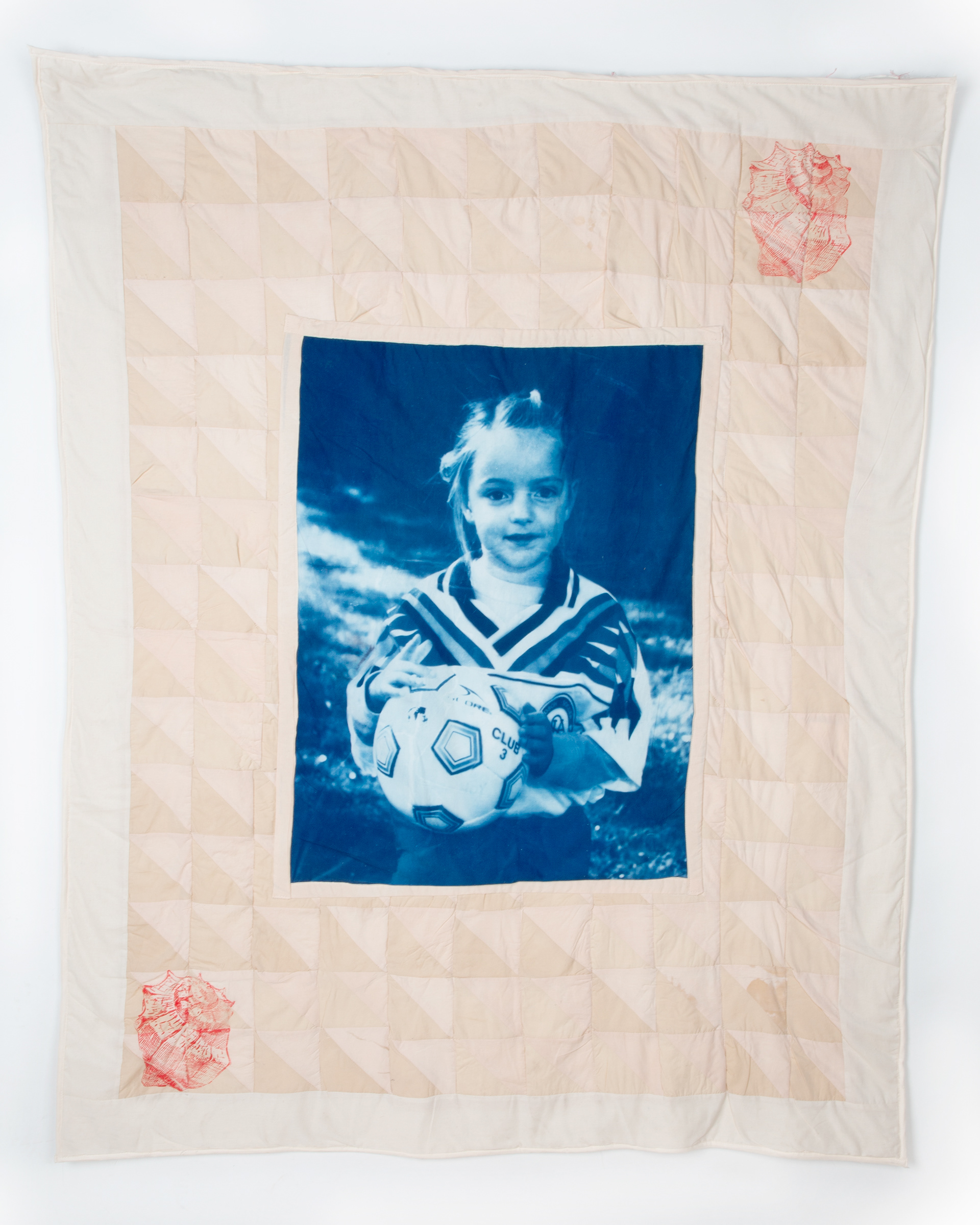
Cotton cyanotype print, machine quilted, cotton fabrics dyed with tea and coffee, cotton batting, and laser-etched stamp. 56" x 44"
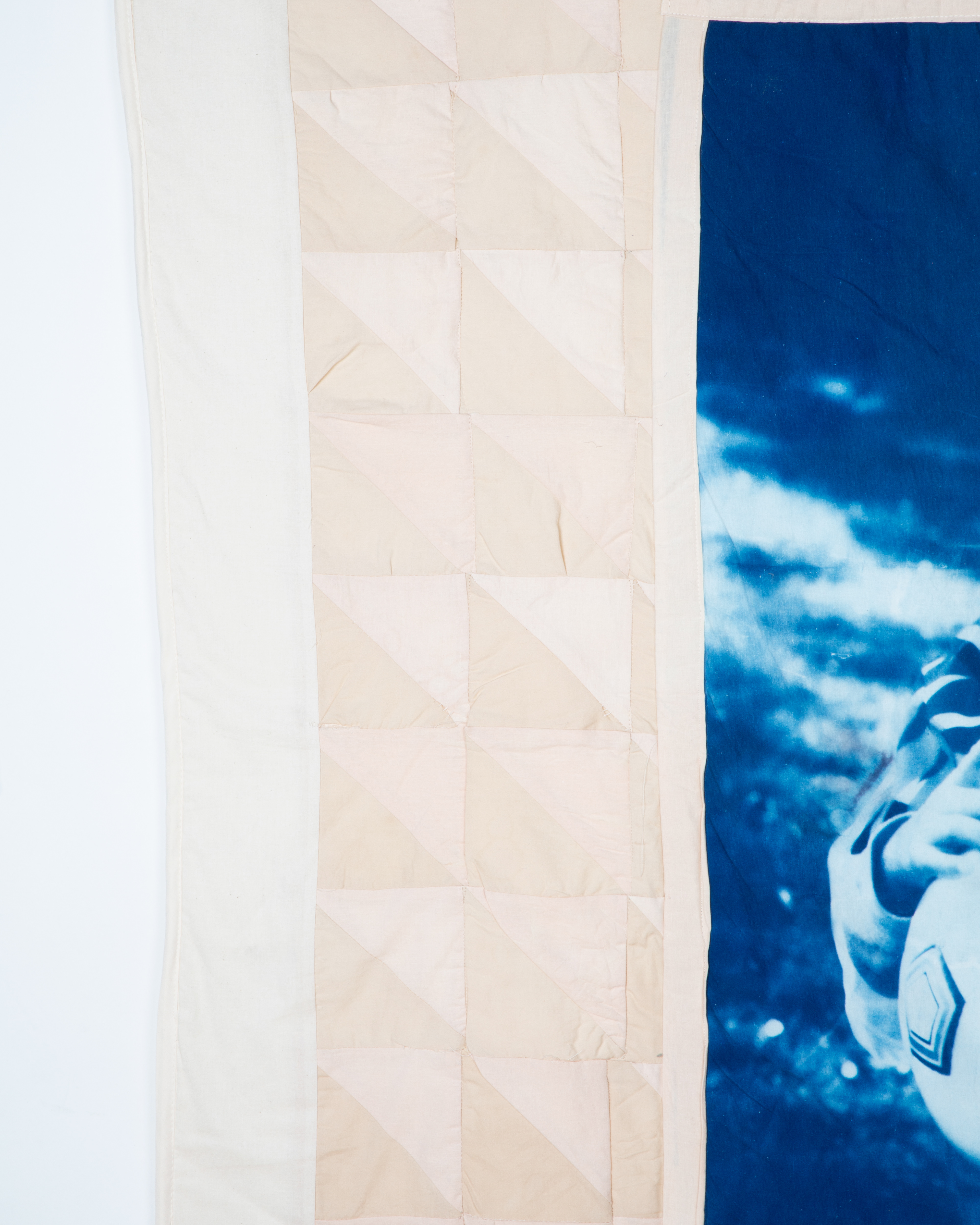
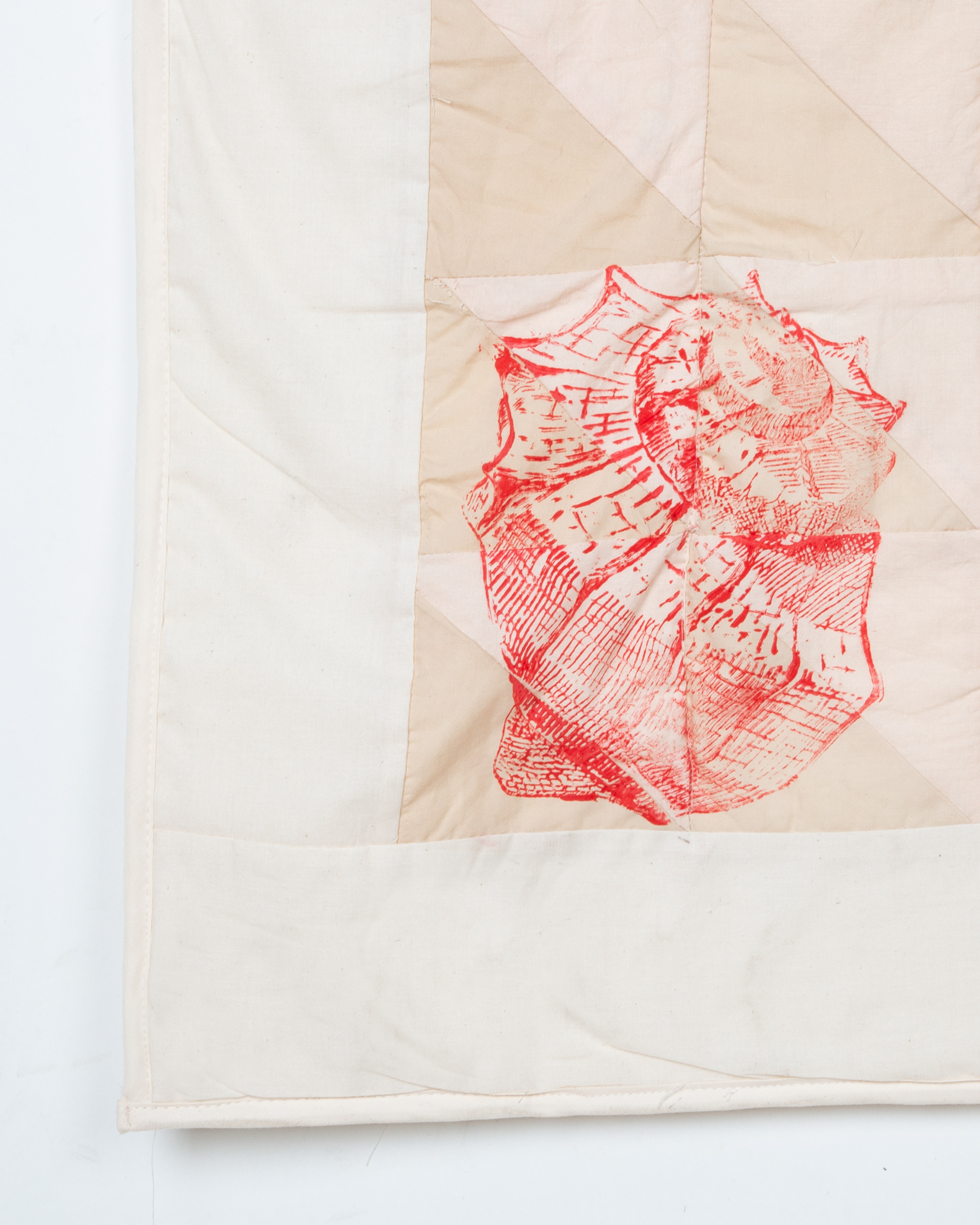
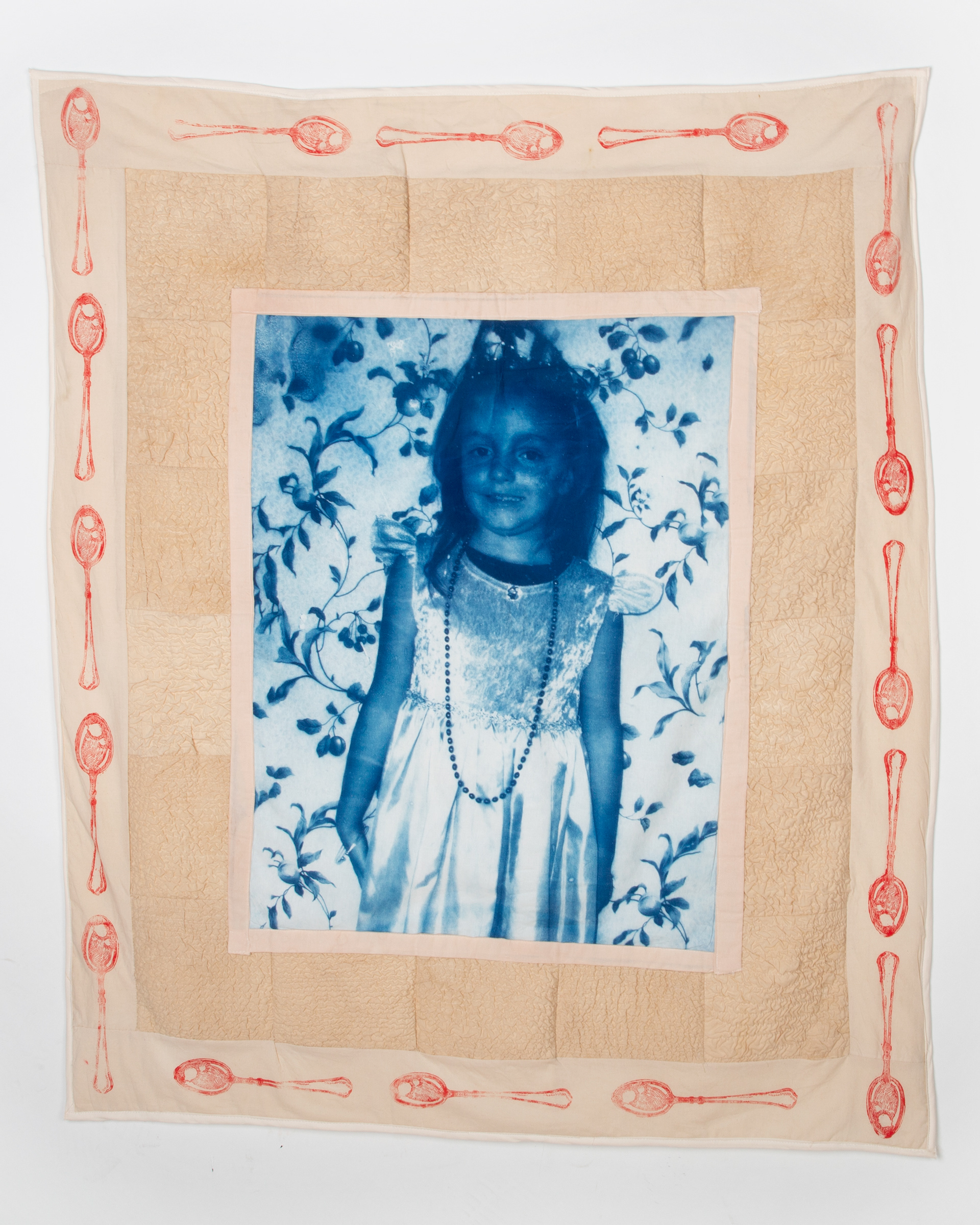
Cotton cyanotype print, machine quilted, cotton fabrics dyed with tea and coffee, cotton batting, and laser-etched stamp. 43" x 36"
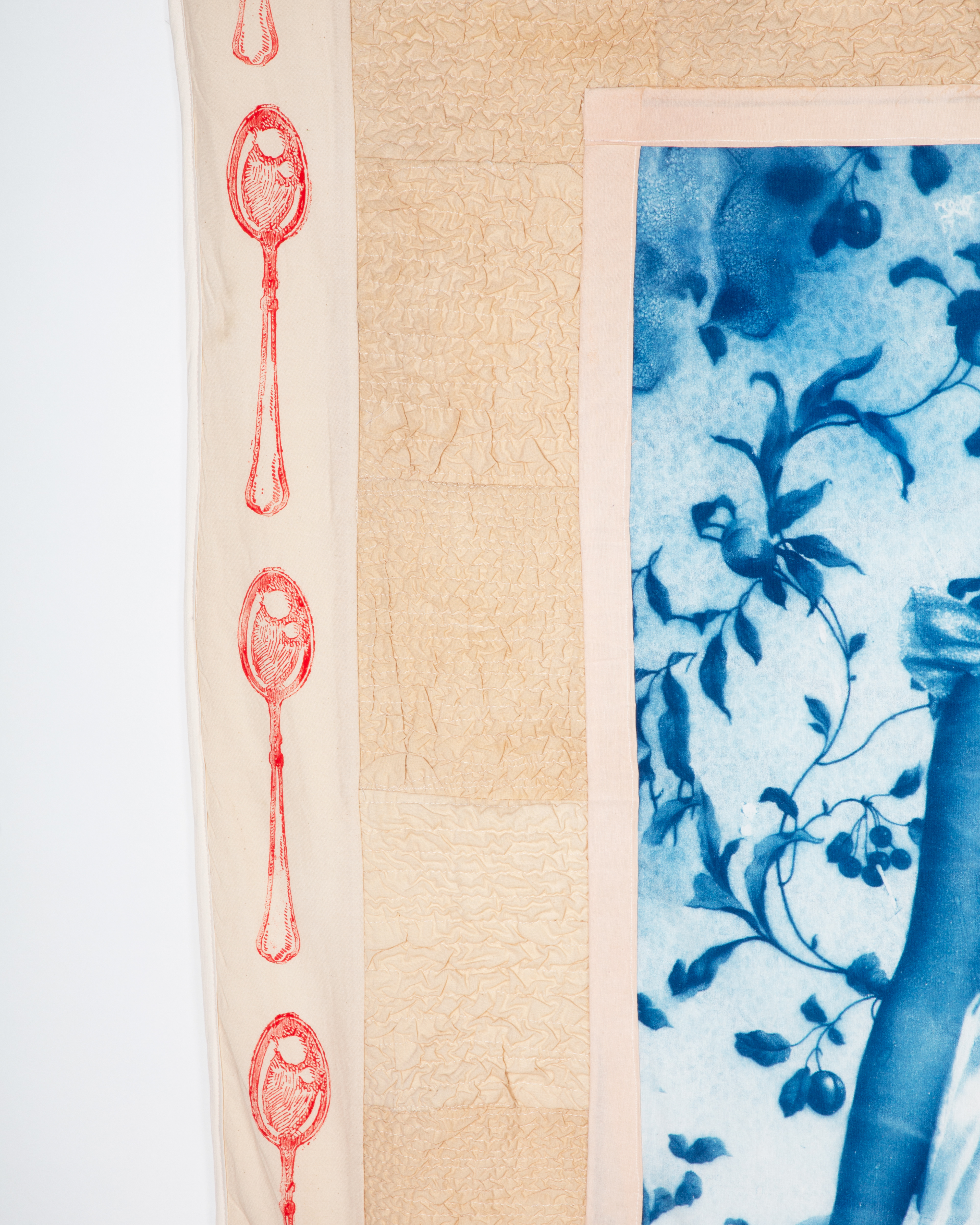
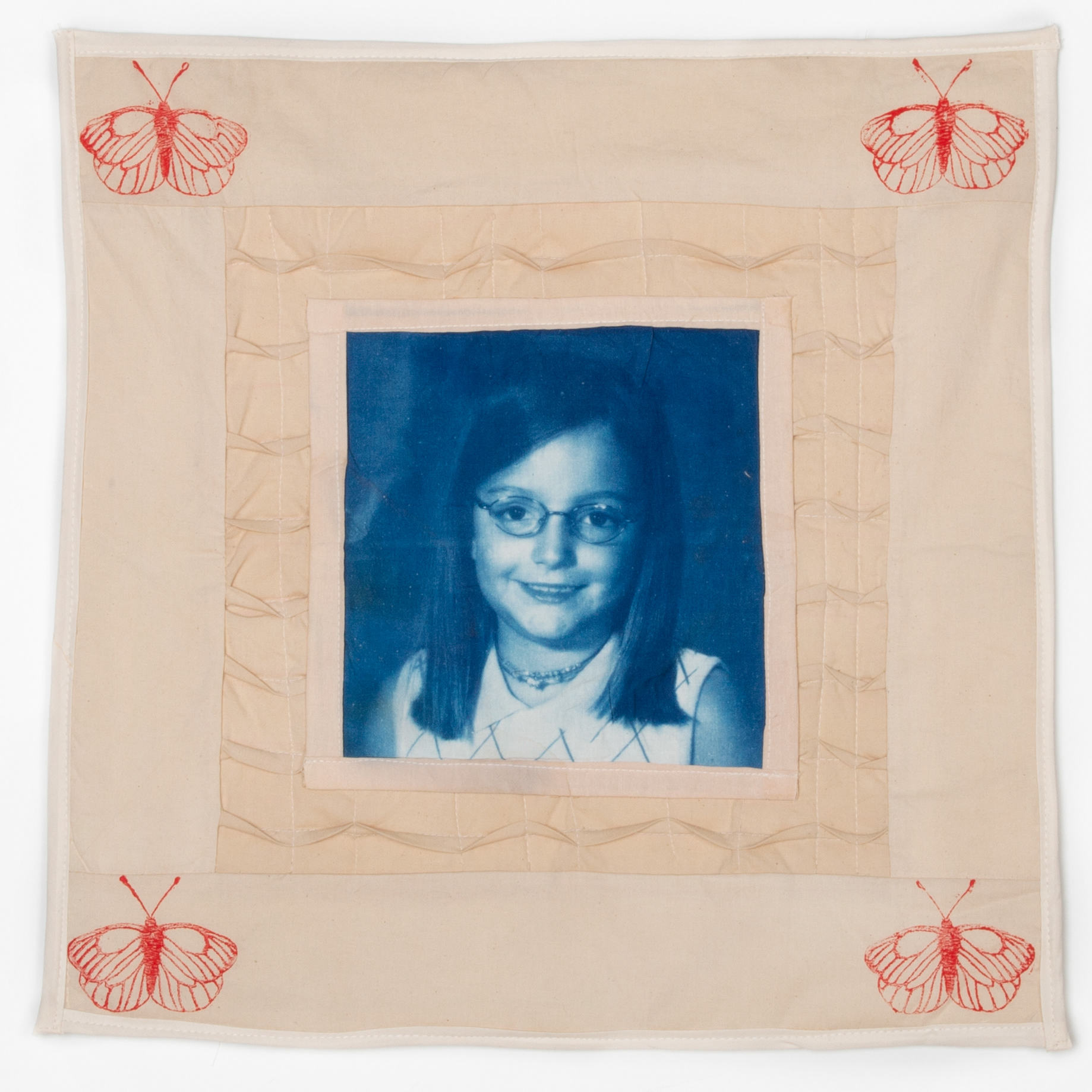
Cotton cyanotype print, machine quilted, cotton fabrics dyed with tea and coffee, cotton batting, and laser-etched stamp. 17.5" x 17.5"
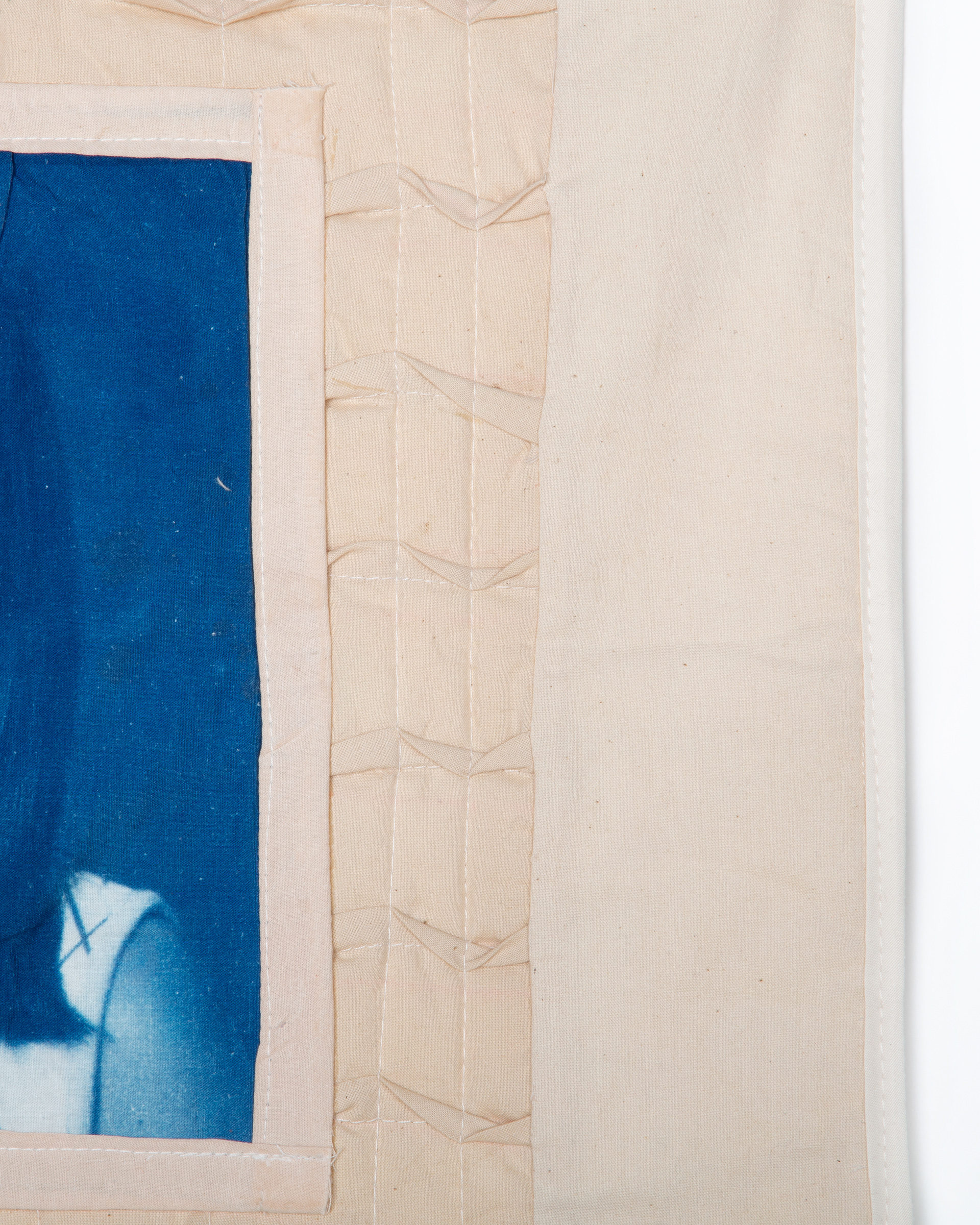
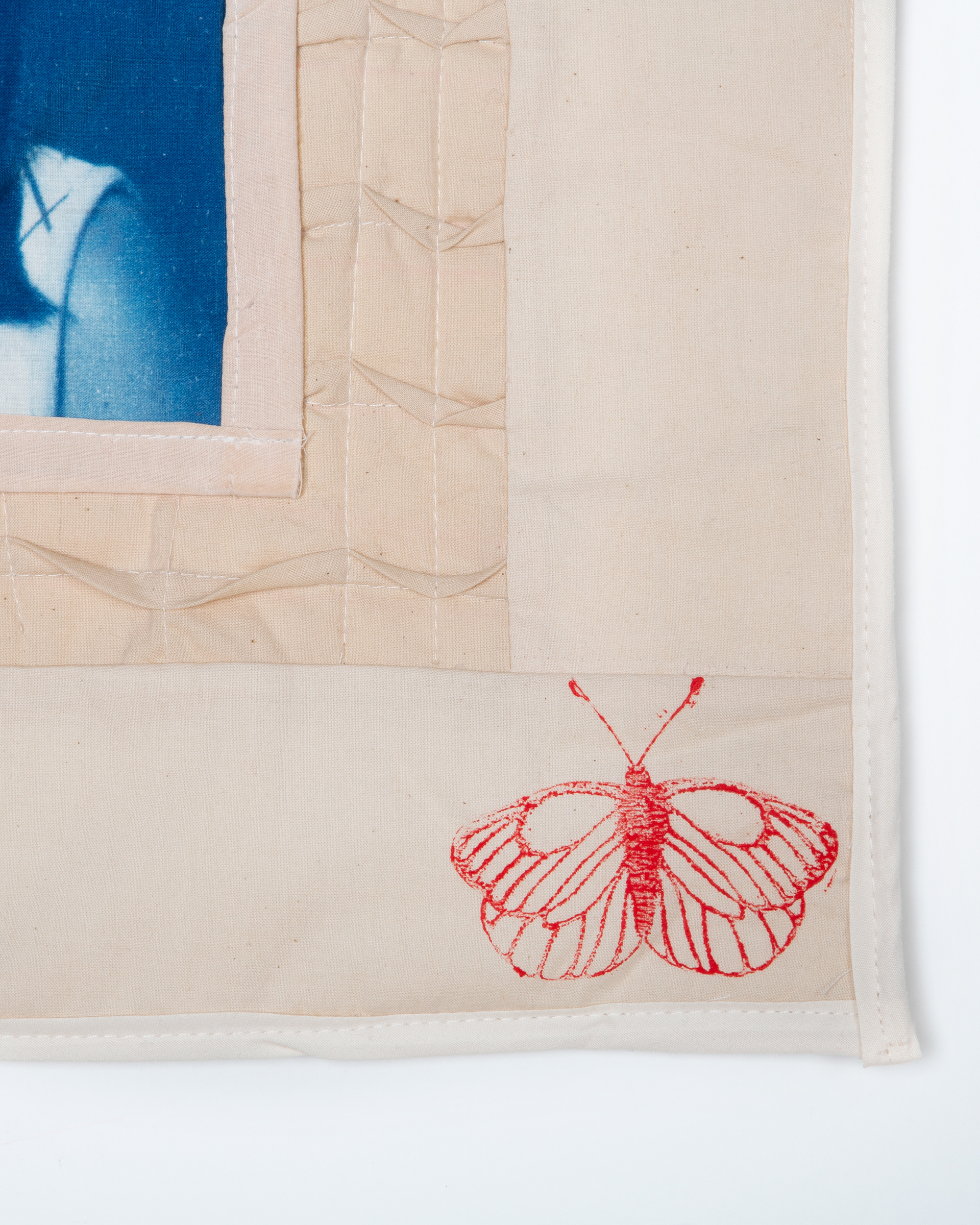
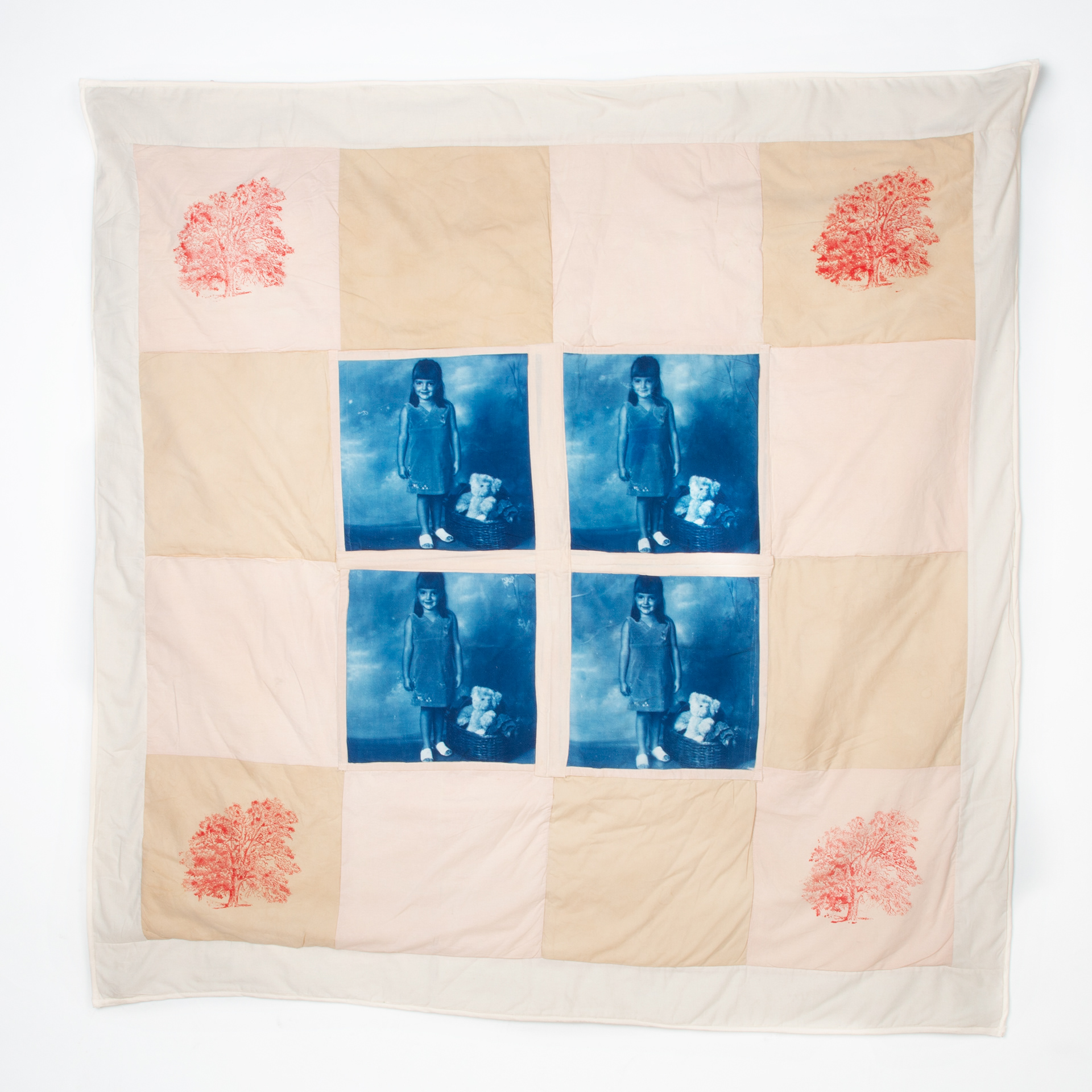
Cotton cyanotype print, machine quilted, cotton fabrics dyed with tea and coffee, cotton batting, and laser-etched stamp. 53" x 55"
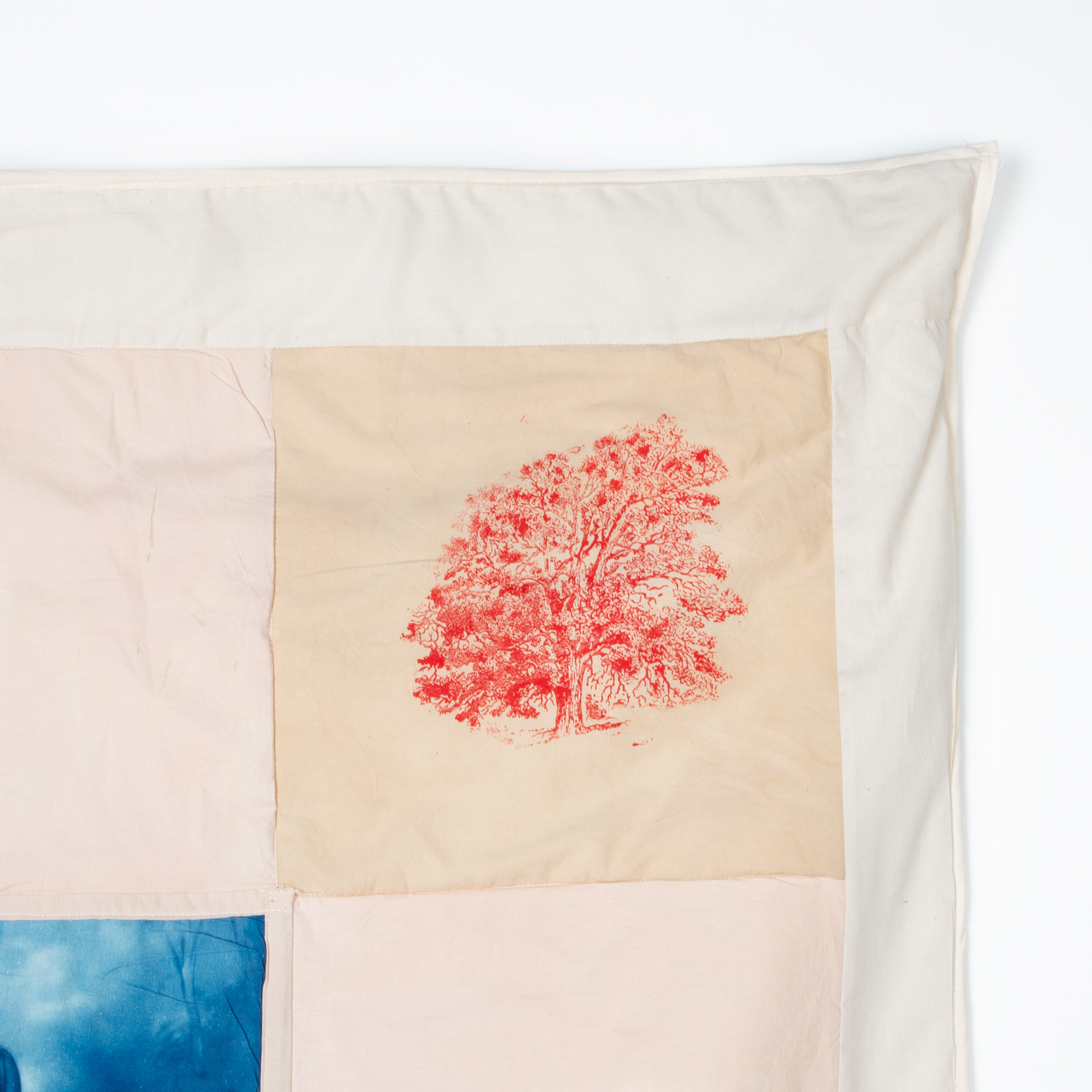
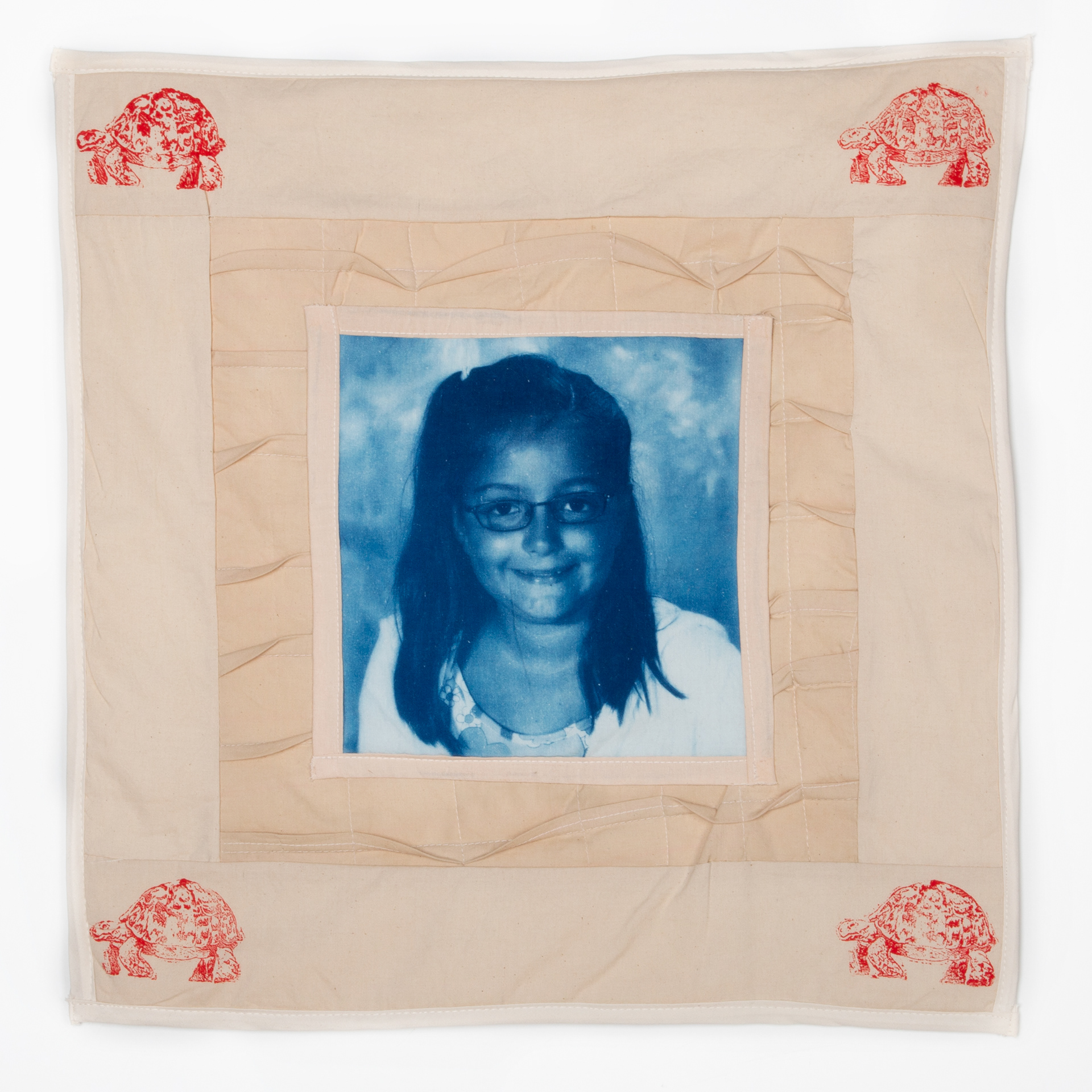
Cotton cyanotype print, machine quilted, cotton fabrics dyed with tea and coffee, cotton batting, and laser-etched stamp. 17.5" x 17.5"
